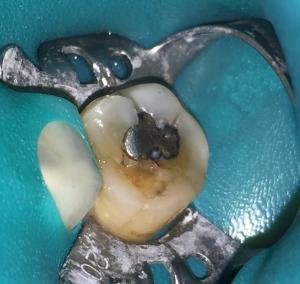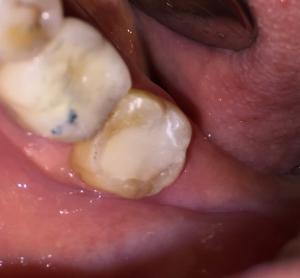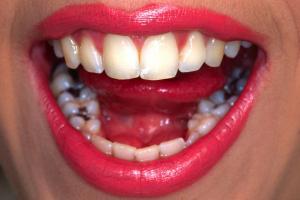Getting your mercury fillings removed can be a great relief to your health and well-being. Research shows that old silver, metal fillings, also known as amalgam fillings, contain more than 50% mercury. Mercury filling removal must be done in a safe manner. Mercury is a very toxic substance to your body and it can cause […]
Category: Mercury Removal
Safe Amalgam Filling Removal
Safe Amalgam Filling Removal
Many of my patients ask about the risks of Metal aka Amalgam and Mercury Fillings. Are the fillings Safe? Should I have them removed? Am I being exposed or poisoned by the Mercury in the Metal Fillings that are in my mouth? Will the Metal and Amalgam fillings make me sick? What is the best material to replace metal and Amalgam Fillings? I spend hours a day discussing all the above questions with my patients. So lets start from the top..
1) Are Metal, Mercury, Amalgam Fillings safe? No. Amalgam Fillings contain approximately 50% mercury and Mercury is one of the most poisonous materials on planet earth. Years ago, if a thermometer broke and there was a mercury spill in a public building, the building was evacuated and a hazmat team was dispatched to clean up the dangerous, toxic mess. So tell me how it is ok to have mercury in your mouth and placed in contact with living tissue permanently?
Should my Amalgam Fillings Removed?
Yes, but the Amalgam Fillings need to be removed safely using the proper equipment to insure your and my safety. I do not want to make you sick, but think about how bad removing this material is for me? I remove this poisonous stuff everyday. We also need to have a plan to replace the Mercury Fillings with another material.
Am I being exposed or poisoned by the Mercury in the Metal Fillings in my mouth?
Yes you are being exposed, but you may or may not be sick or get sick depending on the conditions in your mouth and your genetics. The truth is that every time you eat, or perform any function on your teeth where your Mercury Fillings are touched, you are exposed to mercury. In fact, if you clench your teeth and you have Mercury Fillings you have an even higher exposure to the Mercury in the Metal Fillings due to the increased clenching or grinding on the mercury surfaces of your teeth.
Will the Metal and Amalgam Fillings make me sick?
Whether you get sick or not depends on the amount of Mercury you are exposed to and your genetics. Some people have genes where they are more tolerant to mercury and other metal exposures. Others are more sensitive and can get quite sick even to very small exposures.
What is the best material to replace Metal and Amalgam Fillings?
Once the amalgam with Mercury is removed from your teeth, we evaluate the tooth for decay and cracks. Any external cracks need to be supported or removed and all soft rotten tooth structure needs to be also removed. Your tooth is then treated with oxygen and ozone to be sure the tooth is free of bacteria and to promote healing. At this point your tooth is ready to be filled or rebuilt. A BPA free composite or tooth colored filling can be placed as long as there is more than 50% of your tooth structure remaining. If the tooth is more broken down and more than 50% of the tooth is missing than your tooth lacks the structural integrity to support another filling and it needs to be rebuilt with a tooth colored, metal-free porcelain or a porcelain-like tooth colored material called zirconia. It is very important to place crowns when more than 50% of the structure is missing. Teeth that are over filled will not hold up to the forces of chewing and the tooth will break and more aggressive treatment such as a root canal or an extraction may be consequently necessary.
Are Amalgam Fillings Safe?
Are Amalgam Fillings Safe?
The short answer is, No Amalgam Fillings are not safe. There are materials available that perform better in the human mouth than Amalgam Fillings, such as Dental Composites. Composite aka Bondings or Tooth Colored Filling material do not contain Mercury or any other toxic substance. Dental Composites also bond directly to teeth and do not expand over time as do Amalgams. The truth is Amalgam is used to save a very small amount of money in certain settings such as the military or large Dental Insurance based clinics.
Amalgams leak Mercury vapor into the oral cavity from the day they are placed. The patient is exposed the most Mercury at the time of Amalgam Placement and Removal. Once a Mercury Filling is placed the question is “should I remove my silver fillings?” Most people who have Mercury Fillings in their mouth are not sick. Mostly because they can detox the amount of Mercury being leached and leaked into their body by the Amalgams. In certain cases the mercury toxicity from the Amalgams can become problematic. For example, if the person has Lyme Disease or a gene linked to a decreased ability to detox or remove heavy metal contaminants. In certain individual as these, Mercury exposure in Dental Amalgams may be enough to cause toxicity and heavy metal poisioning.
We recommend every patient have their Amalgams evaluated. Most Silver Fillings are several years old and may need replacement for normal preventative reasons. If a patient has an Amalgams in good repair, is not experiencing any toxic symptoms, and the patient does not clench their teeth, we recommend not removing the filling until it is dentally necessary. Most Amalgams are older than 10 years. Amalgam Filling manufactures suggest replacing the fillings because the Mercury alloy is not stable beyond 10 years and will begin to break down releasing higher concentrations of Mercury gas into the oral cavity. Amalgam Fillings should never be placed or removed in pregnant women, the elderly, or young children.
Can You Safely Remove Amalgam Mercury Fillings?
Do you know that in addition to being unaesthetic, silver Amalgam Tooth Fillings can also be harmful to your body? This is because of the presence of mercury in the Silver Amalgam Filling materials, which has been shown to be harmful, not only to your teeth and gums, but also for your entire body.
However, Thanks to Holistic Dentistry, as the awareness about the harmful effects of the Amalgam Fillings is increasing among the general population, many people are now having their Fillings removed, and replacing them with safer and more esthetic filling materials.
But another question comes to mind here, “we know that Silver Amalgam Fillings are harmful for health, but can they also be safely removed without causing any harm?” the answer to this question is a simple. Yes, provided necessary precautions are taken to ensure the safety of the patient, the dental team, and the environment.
Removal of Amalgam Fillings
During the removal of Amalgam Fillings from the teeth, toxic and harmful mercury vapors are generated, which if ingested or inhaled in significant quantities, can cause damage to the human body.
Keeping this in view, The International Academy of Oral Medicine and Toxicology (IAOMT), an organization that aims at enhancing patient awareness regarding Holistic Dentistry and safer dental materials, has provided a comprehensive protocol, which ensures safe removal of Amalgam Fillings, without any risks of adverse effects.
The basic idea behind this protocol is to minimize the chances of ingestion or inhalation of mercury vapor during removal with the help of continued suction and irrigation.
The IAOMT Protocol for Removal of Amalgam Fillings
This protocol comprises of protective strategies for the patient, the dental team as well as the environment:
Safety of the Patient
• Cut in Chunks – the chances of inhalation or ingestion of smaller mercury particles and vapor are greater than the larger ones. Therefore, removal of amalgam fillings should be done in larger chunks, so as to minimize the harmful effects of mercury.
• The Cooler the Better –the use of a dental hand-piece during amalgam removal can lead to an increase in the local temperature, directly resulting in an increased generation and emission of the mercury aerosol. Therefore, it is best to perform amalgam removal under sufficient water irrigation and air cooling.
• Efficient Suctioning – a high volume evacuation can ensure that most of the mercury vapor is absorbed, and not allowed to accumulate into the dental office.
• Protective Barriers – while rubber dams can be instrumental in preventing mercury ingestion or inhalation, very fine particles can slip right through them. Therefore, usage of a rubber dam, in addition to thorough water irrigation and suction can provide enhanced results.
• Prevent the Skin – the amalgam spatter can also accumulate onto the face or the eyes. Placing a surgical drape, or even a moist paper towel can prevent any harm to these vital organs
• Provide Clean Air – to prevent the patient from breathing the air full of amalgam spatter, pure oxygen, in combination with nitrous oxide can be provided with the help of a positive pressure respiration device.
Safety of the Dental Team
• Use Rubber Gloves – Conventionally used rubber gloves are unable to prevent the diffusion of amalgam and mercury particles. Hence, specially designed nitrile rubber gloves are suitable for this purpose.
• Breath Clean Air – just like it is important for the patient to breath an air free of mercury and amalgam particles, it is equally, rather more important for the dental team to breath a clean air, as they have to perform amalgam removing procedures on daily basis.
Unfortunately, the routinely used paper masks are of no use, hence the best method is to use positive pressure inhalation with the help of industrial respirators, commonly available at the safety equipment stores.
Safety of the Dental Office and Environment
• Filtration – professional air purifiers can be used to filter the air in the dental office to be free of mercury vapor and other harmful particles generated during amalgam removal.
• Supplemental Evacuation – to further minimize mercury vapor generation, a vacuum can be used that throws the aerosol into the exterior, thereby ensuring minimal vapor concentration within the dental office.
• Watch where it Goes – the story does not end here, and all the waste generated from removal of amalgam fillings must be properly stored, sealed and disposed of according to the standards of the Occupational Health and Safety Administration (OSHA) agency.
The Conclusion
Removal of Amalgam Fillings can be performed safely, provided the dentist follows protective protocols, and the guidelines provided by the IAOMT can be considered as the gold standard for Amalgam Removal. Hence, it is high time that you consider having your amalgam fillings removed, so that you can enjoy a healthy and quality life.
Safe Amalgam Filling Removal in Bruxism and Tooth Grinding Cases
Safe Amalgam Filling Removal in Bruxism and Tooth Grinding Cases:
Amalgam Filling Removal in patients who Brux and Grind their teeth can be challenging cases. Tooth Wear or specifically wear of the enamel including cracking, chipping and abrading of the enamel will predispose teeth to decay and will prematurely break down existing filling materials. In the picture below, the yellow area adjacent to the Amalgam filling is where all of the white enamel has been worn away, exposing the underlying Dentin. The Amalgam Filling is also crumbling and separating from the tooth. All of this damage was caused by a TMJ problem. TMJ or TMD is defined as a misalignment between the best fit of the teeth and the path of closure of the jaw. The misalignment causes tooth clenching and grinding or Bruxism. TMJ or TMD problems can be diagnosed and cured by a specially trained TMJ Dentist.
In the case below, the Amalgam Filling containing Mercury Filling material was removed using the www.IAOMT.org safe amalgam filling material protocol. Additionally the TMJ problem was corrected with a Bite Adjustment and the exposed dentin was sealed (as was the original amalgam filling material) with a BPA-free tooth colored composite filling material.


